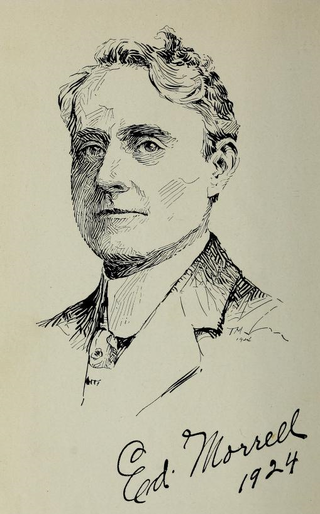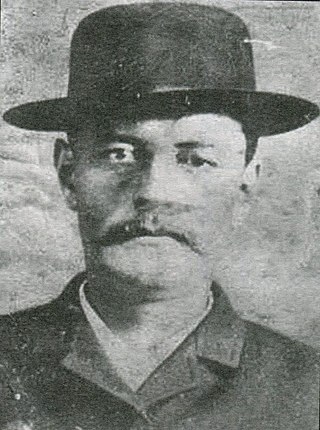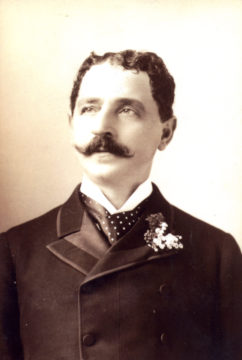
The gunfight at the O.K. Corral was a thirty-second shootout between lawmen led by Virgil Earp and members of a loosely organized group of outlaws called the Cowboys that occurred at about 3:00 p.m. on Wednesday, October 26, 1881, in Tombstone, Arizona Territory, United States. It is generally regarded as the most famous shootout in the history of the American Old West.

Kerman is a city at the intersection of State Route 180 and State Route 145 in Fresno County, California, United States. The population was 13,544 at the 2010 census. Kerman is located 15 miles (24 km) west of Fresno, at an elevation of 220 feet.

Visalia is a city in the agricultural San Joaquin Valley of California. The population was 141,384 as per the 2020 census. Visalia is the fifth-largest city in the San Joaquin Valley, the 42nd most populous in California, and 192nd in the United States. As the county seat of Tulare County, Visalia serves as the economic and governmental center to one of the most productive agricultural counties in the country.

Wyatt Berry Stapp Earp was an American lawman and gambler in the American West, including Dodge City, Deadwood, and Tombstone. Earp was involved in the famous gunfight at the O.K. Corral, during which lawmen killed three outlaw Cochise County Cowboys. He is often erroneously regarded as the central figure in the shootout, although his brother Virgil was the Tombstone City and Deputy U.S. Marshal that day and had far more experience in combat as a sheriff, constable, marshal, and soldier.

Virgil Walter Earp was both deputy U.S. Marshal and Tombstone, Arizona City Marshal when he led his younger brothers Wyatt and Morgan, and Doc Holliday, in a confrontation with outlaw Cowboys at the Gunfight at the O.K. Corral on October 26, 1881. They killed brothers Tom and Frank McLaury and Billy Clanton. All three Earp brothers had been the target of repeated death threats made by the Cowboys who were upset by the Earps' interference in their illegal activities. All four lawmen were charged with murder by Ike Clanton, who had run from the gunfight. During a month-long preliminary hearing, Judge Wells Spicer exonerated the men, concluding they had been performing their duty.

Christopher Evans, a native of Bells Corners near Ottawa, Ontario, Canada, was an American farmer and teamster turned outlaw. He was the leader of the Evans-Sontag Gang.

Thomas Fitch was an American lawyer and politician. He defended President Brigham Young of the Church of Jesus Christ of Latter-day Saints and other church leaders when Young and his denomination were prosecuted for polygamy in 1871 and 1872. He also successfully defended Virgil, Morgan, and Wyatt Earp along with Doc Holliday when they were accused of murdering Billy Clanton, and Tom and Frank McLaury during the October 26, 1881 Gunfight at the O.K. Corral.

Nicholas Porter Earp was the father of well-known Western lawmen Virgil, Wyatt, and Morgan, and their lesser-known brothers James, Newton and Warren Earp. He was a justice of the peace, a farmer, cooper, constable, bootlegger, wagon-master, and teacher.
Lewis "Lew" Baker was a patrolman in the New York Police Department who was simultaneously employed as a "slugger" for Tammany Hall. He was involved in voter intimidation and election fraud during the 1840s and 1850s. A close friend and associate of Irish mob boss John Morrissey, Baker frequently battled supporters of the nativist Know-Nothing movement for over a decade. He is most remembered however as the assassin of William "Bill the Butcher" Poole. Baker shot and killed Poole in a Broadway saloon during a brawl. Both Baker and Morrissey were placed on trial for murder, but were acquitted.

Camillus "Buck" Sydney Fly was an Old West photographer who is regarded by some as an early photojournalist and who captured the only known images of Native Americans while still at war with the United States. He took many other pictures of life in the silver-mining boom town of Tombstone, Arizona and the surrounding region. He recognized the value of his photographs to illustrate periodicals of the day and took his camera to the scenes of important events where he recorded them and resold pictures to editors nationwide.
Gypsite was a small community at the site of a mill in Kern County, California.

James "Old Jimmy" Hope was a 19th-century American burglar, bank robber and underworld figure in Philadelphia and later New York City. He was considered one of the most successful and sought after bank burglars in the United States during his lifetime as well as a skilled escape artist for his repeated breakouts from Auburn State Prison in New York.

Edward H. "Ed" Morrell was an American convict, activist and a writer.

Truly Shattuck was a soubrette star of vaudeville, music halls, and Broadway whose career began in tragedy and ended in relative obscurity.

John Sontag was an outlaw of the American West known for train robberies.

George C. Contant, aka George Sontag, was an outlaw of the American West known mostly for train robberies. Like his older brother, John Sontag, he was originally from Mankato, Minnesota.

Maurice Curtis, stage name M. B. Curtis, was an American stage actor, producer, and real estate developer, at one point tried and acquitted of a policeman's murder.

Belle Cora, also known as Arabella Ryan, was a madam of the Barbary Coast of San Francisco during the mid-nineteenth century. She rose to public attention in 1855 when her lover, Charles Cora, killed US Marshall William H. Richardson after they had a conflict at the theater. She died in 1862.
The history of the Southern Pacific stretches from 1865 to 1998. For the main page, see Southern Pacific Transportation Company; for the former holding company, see Southern Pacific Rail Corporation.
















